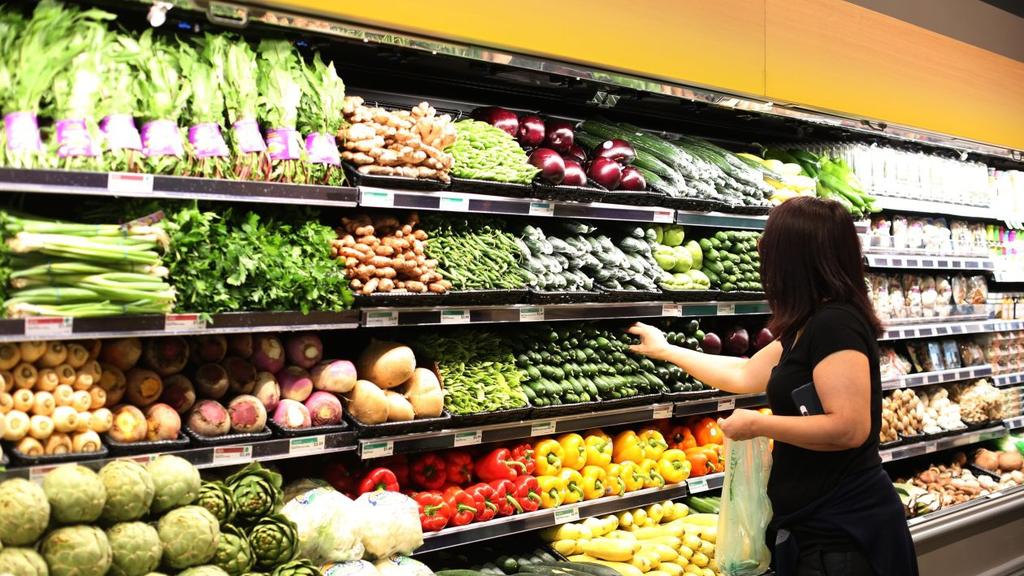One of the biggest companies in the world has unveiled a plan that could completely overhaul the way we complete our weekly grocery shop.
Amazon has unveiled its plan to conquer the grocery market by creating both physical and online one-stop shops that would eliminate the need to buy from anywhere else.
The bold plan was at the forefront of the innovations announced at Amazon’s Delivering the Future expo held outside Nashville on Wednesday, US time.
Bosses at the nearly $2 trillion company spoke of how they can outstrip competitors by allowing a shopper to buy everything from milk and bread to electronics and sporting equipment at the same time, and all on the same website or app.
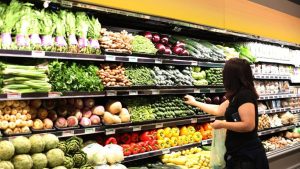
Amazon wants to expand its grocery operations to make one-stop shops.
There’s a trial underway at a Whole Foods shopfront in Pennsylvania, where customers can fill physical baskets with organic groceries – and then use their phones to order extra items like soft drinks or batteries from a “micro fulfilment centre” attached to the back of the supermarket.
Those extras will be packaged and ready to pick up by the time the shoppers leave the store.
Anand Varadarajan, Amazon’s Vice President of Product and Technology for worldwide grocery stores, said the company was building a “supercentre that’s actually super to shop at”.
“I believe Amazon is well on its way to becoming the most convenient destination for customers to shop for groceries, and more,” he said.

Anand Varadarajan, Vice President of product and technology and worldwide grocery stores. Picture: Seth Herald/AFP
Amazon does not currently operate grocery sales in Australia, but has expanded its Whole Foods and Amazon Fresh stores to Europe and parts of Asia.
Mr Varadarajan said the company could offer tens of thousands of food and grocery items including fresh food alongside 300 million items on Amazon’s websites.
“Today grocery shopping isn’t as easy as it should be,” he said.
“People are dedicating more time and brain power to get what they need at the right price.
“Imagine if you could get all your fresh groceries, plus household goods and merchandises, served through one relationship and experience.
“Amazon has everything customers need for all their shopping trips.”
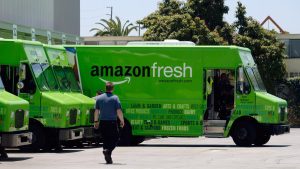
Amazon Fresh’s rollout was held back for a period. Picture: Kevork Djansezian/Getty Images
Mr Varadarajan said a trial was underway in Phoenix offering Prime members tens of thousands of grocery items alongside millions of Amazon.com products, which could be delivered in hours.
“We’re seeing produce favourites like bananas, avocados and strawberries bubble up to the top 20 sold items for the site,” he said.
He said more Amazon customers had also started using Amazon Fresh and Whole Foods websites after noticing the grocery offerings on the site.
Tony Hoggett, the Senior Vice President of Worldwide Grocery Stores, said the company planned to use its vast product range to serve all of customers’ needs.
“In the average month, you might shop at a half dozen different places for groceries and everyday essentials, like personal and household goods,” he said.
“That’s different store locations, layouts, mobile apps, products, promotions, delivery promises, loyalty programs, and subscriptions, just to fill the fridge and pantry.
“At Amazon, we’re working to change that. We believe we can make customers’ lives easier every day by offering all the selection they want while making grocery shopping simpler, faster, and more affordable.”
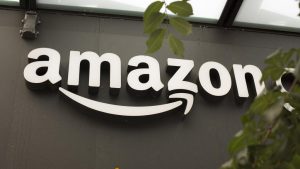
Amazon held its delivering the future expo last week. Picture: David Ryder/Getty Images/AFP
Analysts in the US have Amazon trailing retail giant Walmart in its share of the country’s digital grocery market, with the company expected to rake in US$40b this year.
Walmart already offer similar online offerings to the new ones Amazon is rolling out, but does not have the global reach of its rival.
The Washington Post reported in September that Amazon was responsible for six per cent of all grocery sales in America last year, with significantly fewer physical stores than its competition.
Amazon bought Whole Foods for US$13.7 billion in 2017 – it has seen a 40 per cent sales growth and expanded to more than 500 locations since.
It has also recently begun opening new supermarkets across the country under its Amazon Fresh brand, just over two years since CEO Andy Jassy paused the outlet’s rollout.
Walmart also outstrips all-comers when it comes to its share of the US$1 trillion total grocery market – both online and in store – with about 21 per cent share.
The next best was Costco, with only about eight per cent.
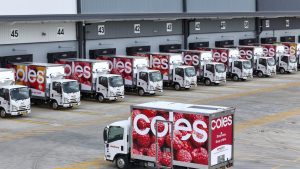
Coles and Woolworths offer home delivery. Picture: Toby Zerna
In contrast, Woolworths and Coles control about 67 per cent of Australia’s grocery sales while Aldi and IGA have shares of less than 10 per cent each.
Australian supermarkets offer nothing similar to the scale of what Amazon is pledging to roll out, and the Coles and Woolworths duopoly has come under increasing scrutiny from authorities during a cost-of-living crisis.
Watchdog the Australian Competition and Consumer Commission last month announced it was taking Coles and Woolworths to the Federal Court alleging the companies had offered “illusory” discounts.
The ACCC alleges the companies misled consumers by temporarily hiking prices before slapping them with promotional discount stickers at prices higher than before the hike.
It claims Woolworths did this for 266 products in its Prices Dropped promotion over 20 months, while it alleges Coles did it for 245 products in its Down Down promotion across 15 months.
Both companies have said they will defend the claims in court.
A recent study by consumer group Choice also recently found Coles and Woolies were offering “almost identical” prices to each other.


